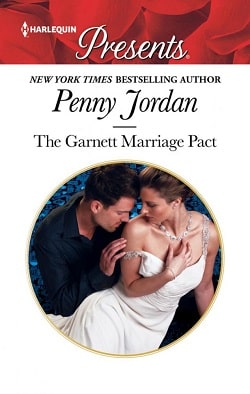An expression of deep puzzlement passed over Alison’s features.
‘That’s all I need,’ Judith told her.
‘Why?’ Alison was suspicious. ‘Are you leaving?’
‘Leaving?’ Judith snorted. ‘I’m not leaving, I’m getting promoted!’
Alison shook her head with an expression of self-righteous indignation. ‘You know, you’re even more arrogant than I gave you credit for,’ she told Judith. ‘You’re more likely to be fired than promoted.’
‘Well, if I am fired,’ Judith delivered a withering glance in the direction of Alison’s mini, ‘at least I’ll have more than a fanny pelmet to fall back on.’
Back at her desk, she removed the plastic wallet containing the Jacob Strauss investigations from her handbag. In the end, she hadn’t been able to resist her journalistic impulse to follow up this story. She had decided to proceed – but with extreme caution. She was keeping her notes on disk – she certainly wasn’t risking leaving them on any computer. When she’d told Alison MacLean that two months was all she needed, she hadn’t been joking. That was as long as she’d given herself to finish her investigations; she couldn’t keep up this charade with Carter for ever. The idea of doing an Alison to buy time and keep Carter off her back had come up over a few pints with Ted Gilmour. She suspected Ted had his own motives for urging her in the direction of her new wardrobe, but that was another story. The point was, for the past three weeks, since her meeting with Denise Caville, she’d been editing press releases and flashing plenty of cleavage, and Alex Carter had been sweet as pie, with not a harsh word exchanged. For the moment, at least, her position on the City desk was secured.
In the meantime, having double-checked Merlin’s sources, she now had enough to run a story that would be the lead business piece of the week. It would no doubt be picked up by the US media and turn into an even bigger story in America, where Jacob Strauss was so much better known.
But Judith had already decided against that course. Apart from its being lazy journalism, every instinct told her that Jacob Strauss’s rapacious greed and managerial incompetence hadn’t come to an abrupt end once he’d joined Starwear. The full might of Starwear’s promotional machinery may have kept his activities concealed, but that didn’t mean there weren’t other ways of getting to the truth.
Besides, Judith reckoned she knew where to look. When Jacob Strauss joined Starwear, and until his recent appointment as CEO, his title had been President of Starwear’s International Division. At the time he’d been brought on board, Starwear divided its activities into three geographic territories – America, Europe and ‘International’. It was this latter category to which Jacob had been assigned, and Judith wondered if Nathan had put Jacob into International on the basis that it was where he could do least harm. Five years before, International Division had comprised a miscellaneous assortment of factories and markets, including developed countries such as Japan and Australia, as well as the developing territories of India, Thailand and Indonesia.
As manufacturers the world over began the stampede to set up factories in developing countries, where labour was significantly cheaper than anywhere else, Starwear’s International Division suddenly acquired a new importance; a decision was taken by the Starwear Board to shift as much production of Starwear products into the developing world as possible. The trouble was, few of the existing production plants in developing countries were equipped for huge production volumes. Which was where the Quantum Change programme came in. Calling in Forbes, the management consultants, Jacob Strauss had asked them to come up with a way to transform Starwear’s production processes, as quickly and painlessly as possible. Forbes had toured all the S
tarwear sites involved and retreated to their cerebral majesty before presenting a two-inch-thick document which gave detailed recommendations on what ought to be done. The figures showing production improvements looked impressive.
Quantum Change had been duly implemented. And for a worrying few months afterwards, it looked as though the huge costs of the multi-country operation had been entirely wasted. Far from sharp increases in productivity, there was actually an overall decline, with labour problems and mechanical breakdowns temporarily closing down some of the factories. Behind the scenes, Judith learned from a contact at Forbes, there had been furious rows between senior Forbes consultants and Jacob Strauss, with both sides blaming the other for the potential catastrophe threatening not just International Division, but the whole of Starwear. Three shadowy off-shore companies, Zillion, Kraton and Quivelle, had been buying up Starwear shares in huge numbers. They were obvious front operations – but no one knew for whom. Judith had discovered all three were incorporated in the Isle of Man and owned by Swiss-based trusts – their true ownership was impenetrable. Jacob Strauss had been paranoid that Ed Snyder, a sportswear rival and former Starwear director who already held substantial stock, was about to mount a hostile takeover.
For a period of several months, Jacob Strauss disappeared from public view, leaving Nathan to reassure Wall Street and the City that Quantum Change ‘teething problems’ would soon be dealt with. And, after a worrying transition period, true enough, the turnaround occurred. International Division came back from the brink to triumph. Not only were Forbes’s upbeat productivity forecasts met – they were comfortably exceeded. Fears of takeover abated and Jacob Strauss now emerged as the man who had transformed Starwear International, and Quantum Change was regarded as the model of future sportswear manufacturing.
It was about a year later that, for the first and only time, rumours started circulating about Starwear and child labour. At first, the story had been confined to gossip on the trading floors and second-hand sources. Then a tabloid newspaper had run a story that was careful not to accuse Starwear directly, but did report on the rumours about ‘a major sportswear manufacturer’. It was at that point that Nathan Strauss had insisted Starwear respond to the whispering campaign before it started gaining any credence. Judith had read the media statement issued by Nathan, which said he was outraged by the suggestions of employment practices that ran completely against all that Starwear stood for. She had also watched an interview of Nathan, over and over. Run by Bloomberg news service at the time of the press release, the high point of the interview showed Nathan delivering his message to the camera with rabbinical severity: ‘Starwear has never used child labour,’ he declared, ‘and never would use child labour. The very idea of it is an abomination. Those who are spreading these lies, and bearing false witness, will have the full weight of the law to answer to.’
He couldn’t have put it any plainer. And his statement had the desired effect: there had never been another word about the child labour issue. Judith was struck by the lack of curiosity on the part of analysts and journalists about why it was that Quantum Change had over-delivered on even its own heady forecasts. Had it under-delivered, of course, there would have been close questioning. Flaws would have been found, blame would have been attributed, heads would have rolled. But over-delivery was great for profits and, so long as it continued, everyone seemed happy to go along with the explanation that it was all because of Jay Strauss and his Quantum Change programme.
Judith decided she needed to know more about Quantum Change, and confidentially phoned Jo Ayreshaw, her contact at Forbes, and formerly one of her brightest contemporaries at Oxford. Jo quickly told her that Forbes couldn’t hand over any information about Starwear for which the company hadn’t given formal approval. But, she also said, the Quantum Change model had proved to be such a success that Terry Derwent, the Forbes director in charge of the programme, had done the rounds of several business schools, lecturing on what had been achieved for Starwear, with the company’s full approval. As a result, there was already detailed information about Quantum Change available.
A trip to City University, one of the business schools Derwent had visited, and a search of the library, soon produced a number of documents which Judith, after standing in the library’s interminable photocopying queues, eventually took away with her and studied in painstaking detail. At the same time as pursuing this line of investigation, Judith had also tried the official channels. She’d telephoned about half a dozen different people at Starwear, under the guise of researching a straight piece on Change Management. She had to exercise extra care not to arouse any suspicions, she knew, but the change management people in London, the Starwear International headquarters in New York, the operations divisions of Starwear in India and Thailand and Indonesia had all given her the same response: all journalist calls are to be referred to our PR agency. And the agency looking after Starwear in London? Lombard.
In the five years she’d been a national journalist, Judith knew enough about Lombard, both directly and through reputation, to give the agency a wide berth. Not because Lombard couldn’t be relied upon to produce a highly sanitised version of reality for her to write up. It was just that, once having come to the attention of the Starwear account handler at Lombard, she’d never hear the last of it. Lomboids had a reputation for relentlessness without equal. Any journalist expressing the remotest interest in a client would be chased and harried and leaned upon until the right form of words appeared in the newspaper. And if the right form of words didn’t appear, then the future prospects of a journalist getting access to any of Lombard’s many other blue-chip clients were slim, to say the least.
It wasn’t future access that concerned Judith right now. It was the far more imminent prospect of harassment. She had no desire to have to fend off telephone calls from silver-tongued PR-ettes, trying to merchandise their version of events. If they so much as suspected that her line on Starwear was going to be less than positive, they’d start jumping, not only on her, but on Alex Carter too – and, while she carried out her investigations, that was a complication she could well do without.
She was still trying to work out how to get a door at Starwear to open when, to her enormous surprise, she had received a call from the secretary of none other than Mark Hunter, Operations Director of Starwear International. Mr Hunter understood she had been making enquiries about the Quantum Change programme; would she care to visit Starwear’s Cavendish Square headquarters, next time Mr Hunter was in town, for a full briefing?
Judith collected up the plastic wallet of carefully selected Quantum Change documents she had removed from her handbag, slipped them in her briefcase, and made her way across the noisy newsroom. Having got Alex Carter off her back, at least for the moment, she could disappear off to meetings without any questions being asked. Downstairs, she made her way out of The Herald building, walked up to the main road, and had to wait only a few minutes before flagging down a taxi. ‘Cavendish Square,’ she told the driver.
If it was important to make sure that Lombard didn’t get wind of her investigation, she reckoned, it was even more important to keep Alex Carter in the dark. As the black cab purred its way along the Embankment, she thought how, even in these miniskirted, Press Release-driven times, she was still skating on thin ice with Carter. He could turn on her at any moment – Alison MacLean had been right about that. If it suited Carter, she could suddenly find herself consigned to the supplements desk without explanation. If Carter benefited, she could arrive at work one day to find her investigation of Jacob Strauss had been hijacked. Eager though she was to share her discoveries and suspicions, and to have the benefit of someone else’s perspective, she realised that, right now, silence was her best counsel.
Starwear’s Cavendish Square headquarters were a model of restrained elegance. Established by Nathan Strauss, the global high command for Starwear was accommodated in a magnificent Georgian building,decorated with an understated sophistication which was a testament to the former Chief Executive’s taste – and that of his wife’s. Judith was surprised to find that Starwear’s entire executive offices comprised just three floors – and quickly realised that the company’s huge operational staff must be based wherever the organisation had factories or distribution hubs.
It wasn’t long after arriving that she was shown up a sweeping staircase, decorated in stately-home style with huge oil paintings, to a meeting room in which two dark-suited men were waiting. Mark Hunter was tall, broad-shouldered and blond-haired, the whiteness of his shirt seeming to emphasise the darkness of his tan. Greeting her with a slow, Southern accent, he radiated laid-back confidence. With him, short and bespectacled, was Dr John Eaglesham, Vice-President of Operational Planning and, on first impressions, thought Judith, clearly a propeller head.
It was only a few minutes before the two of them had slipped into the Mark and Dr John routine, a presentation of Starwear’s Quantum Change programme which they’d evidently delivered many times before. It began with a six-minute corporate video, showing various Starwear factories in the developing world, before and after the ‘QC’ programme – a distinction which was nothing if not impressive. That was followed by ten minutes of Dr John, explaining the rationale for the programme, and explaining how it had been implemented, with the aid of trade-off analyses, flow charts and performance models. Then Mark Hunter, whose handsome good looks were, Judith suspected, matched by an extremely well-developed ego, talked about the impact of Quantum Change on Starwear as a brand, and how it made the company virtually impregnable in the market.
It was a slick performance, the video imagery well supported with detailed documentation, and all delivered with an upbeat, almost evangelical zeal which le
ft no doubt that QC was the best thing that had happened to Starwear in recent years. Judith absorbed all this, and when invited to ask questions afterwards, followed up on some of the aspects mentioned in the video before Mark Hunter handed over a VHS copy for her file. While she was interested, it wasn’t the reason she’d come here today. But she knew what game was being played – she was every bit as capable of playing it herself. Which was why she declined to reveal her cards when asked if she had any questions.
It was only after they’d finished with questions and had spent a few minutes informally chatting about the manufacturing industry in Britain that Judith asked, while sweeping her papers up into her briefcase, ‘By the way, am I right in thinking your QC factory in India has eight production lines?’
Both men nodded in unison. ‘Correct,’ replied Hunter.















